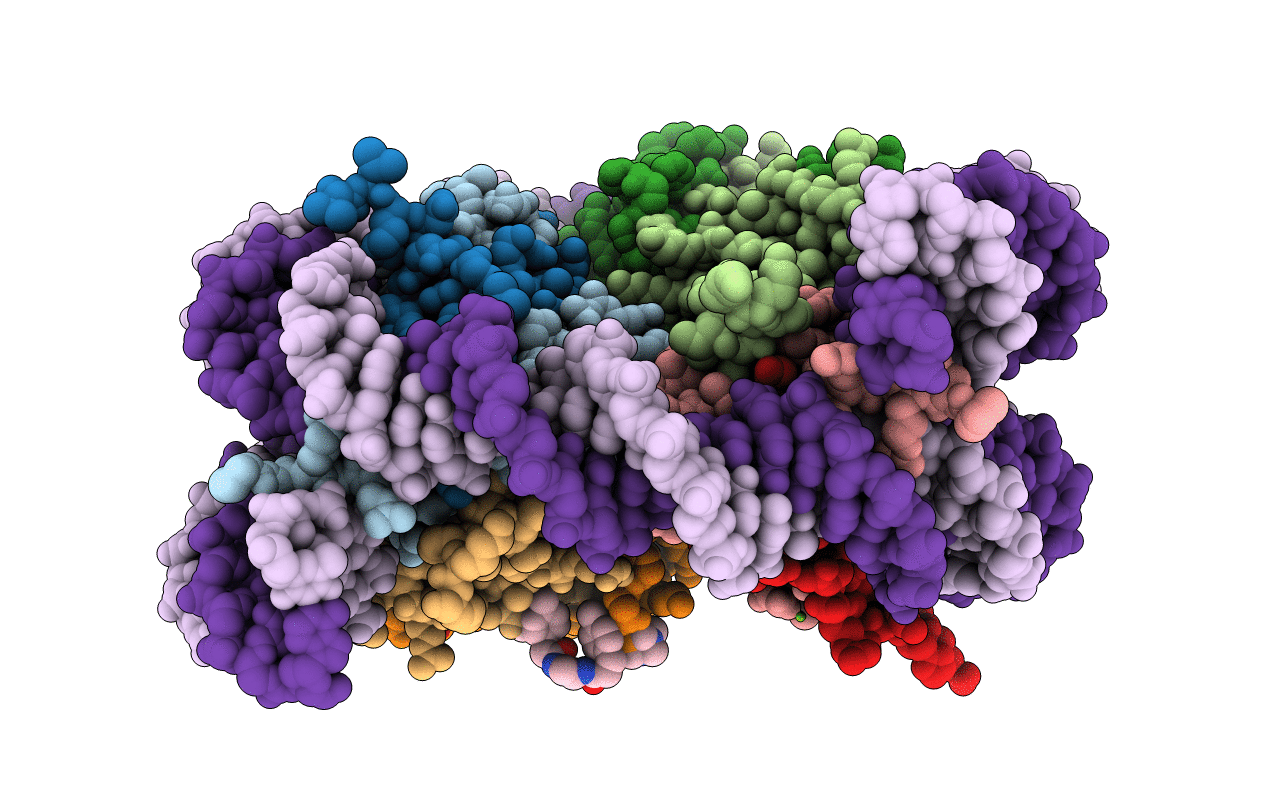
Deposition Date
2017-04-07
Release Date
2017-10-11
Last Version Date
2023-11-22
Entry Detail
PDB ID:
5XF6
Keywords:
Title:
Nucleosome core particle with an adduct of a binuclear RAPTA (Ru-arene-phosphaadamantane) compound having an ethylenediamine linker
Biological Source:
Source Organism:
Xenopus laevis (Taxon ID: 8355)
Homo sapiens (Taxon ID: 9606)
Homo sapiens (Taxon ID: 9606)
Host Organism:
Method Details:
Experimental Method:
Resolution:
2.63 Å
R-Value Free:
0.25
R-Value Work:
0.20
R-Value Observed:
0.21
Space Group:
P 21 21 21


